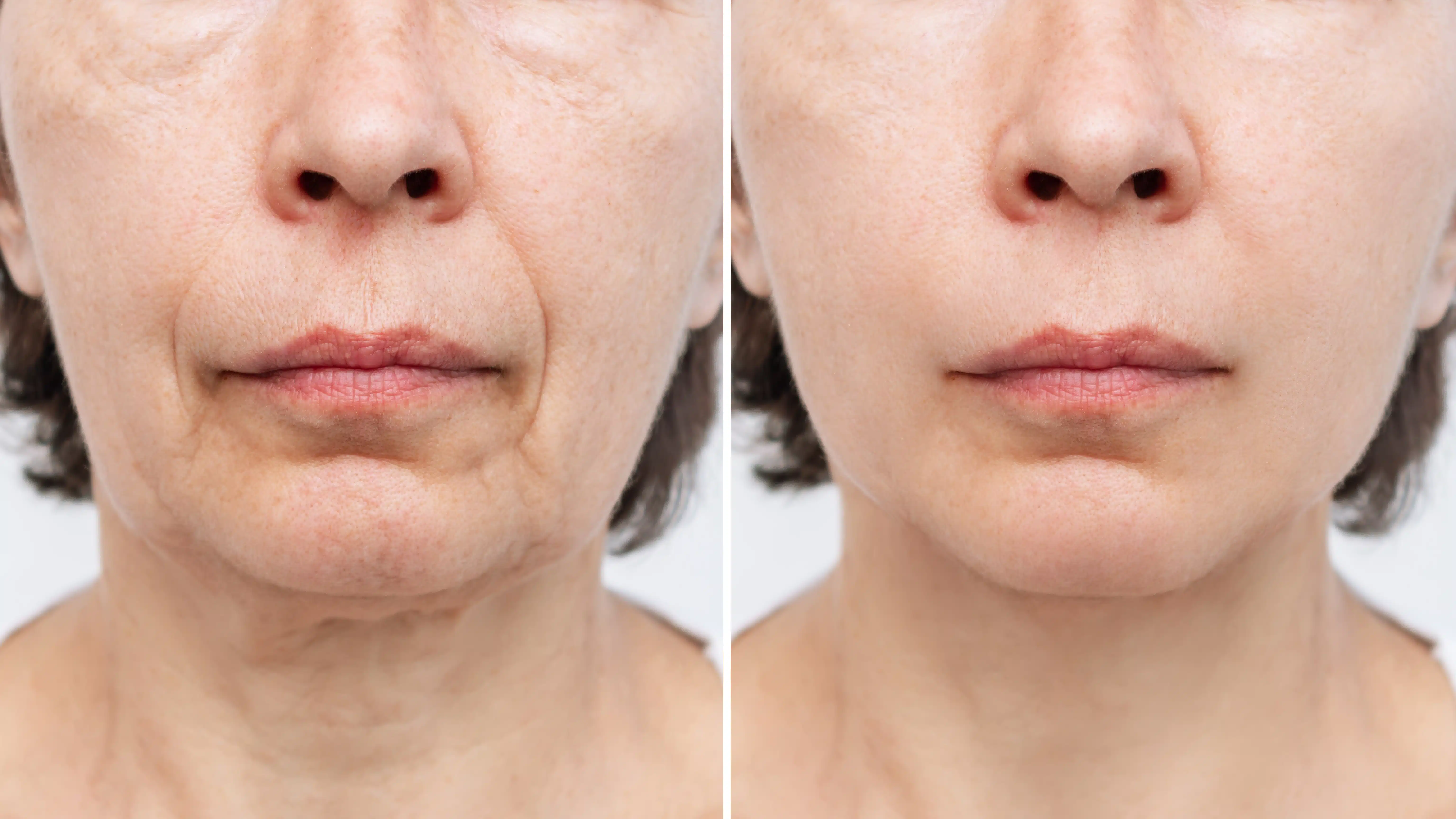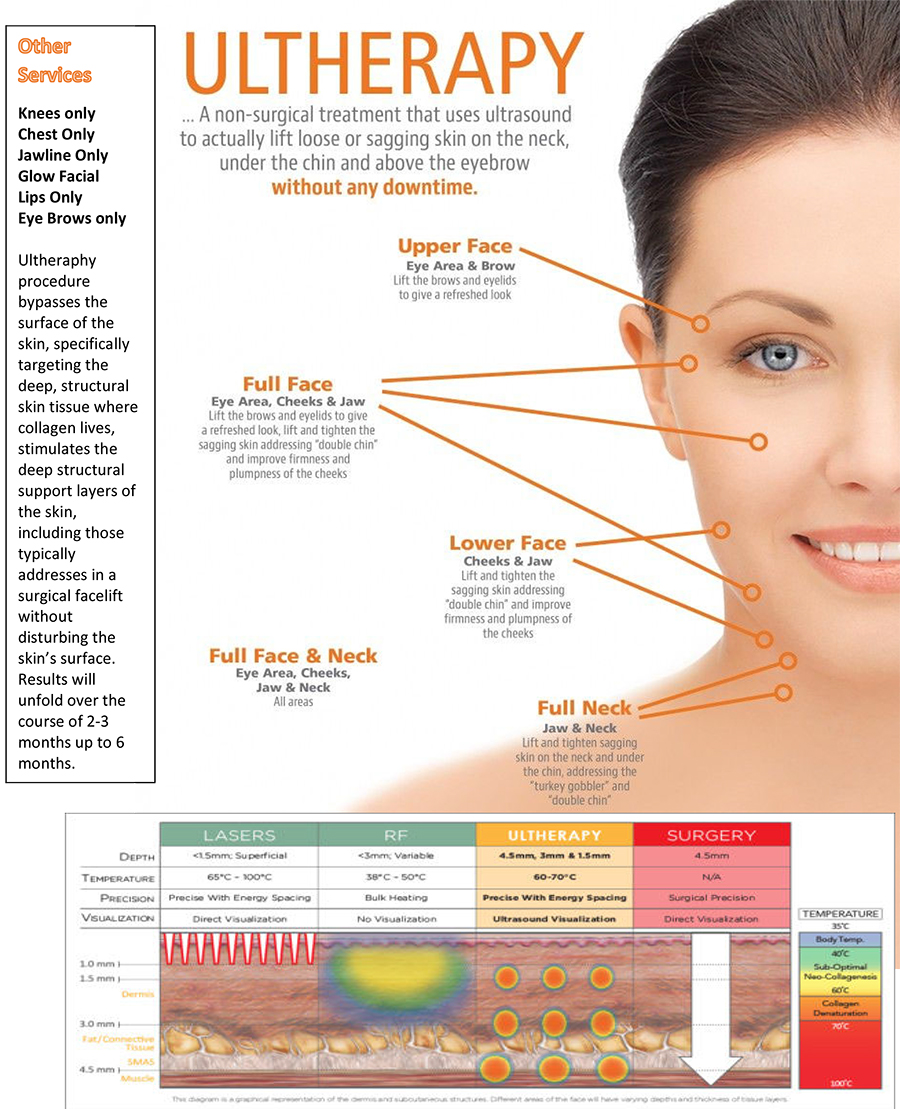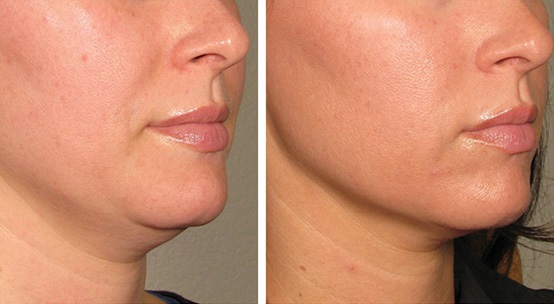Why Ultherapy Might Be Medically Essential: Exploring the Reasons for a Non Surgical Lift
Ultherapy is getting attention as a viable alternative for individuals dealing with skin laxity because of maturing or specific clinical conditions. This non-surgical treatment promotes collagen manufacturing, supplying a remedy that avoids the recuperation time connected with invasive procedures. As individuals seek to boost not only their appearance however likewise their overall skin wellness, recognizing the conditions that warrant Ultherapy's usage becomes essential. What aspects add to its clinical requirement?
Comprehending Ultherapy: What It Is and Exactly how It Functions
Ultherapy, a non-invasive cosmetic treatment, uses ultrasound modern technology to stimulate collagen manufacturing and promote skin tightening up. By delivering concentrated ultrasound power deep right into the skin, it targets the foundational layers generally attended to in surgical renovations. This process urges the body's natural healing reaction, causing gradual training and tightening of the skin over time.

Therapy sessions usually last in between 30 to 90 mins, relying on the dimension of the location being dealt with. While results might not be promptly visible, ideal results normally appear within a couple of months as collagen continues to develop. Ultherapy offers an engaging non-surgical alternative for individuals looking for skin renewal without the requirement for invasive treatments.
The Aging Refine: Results on Skin Elasticity and Collagen
Aging unavoidably brings changes that lessen skin flexibility and collagen manufacturing, bring about noticeable signs of drooping and wrinkles. As individuals age, the skin's ability to maintain wetness declines, resulting in a drier and much less resilient surface. Collagen, a necessary protein in charge of skin structure, additionally reduces, creating the skin to shed its firmness and youthful appearance. Elements such as sunlight exposure, toxic wastes, and way of living options further accelerate this decline in skin quality.
This loss of flexibility and collagen creates a waterfall of changes, consisting of the development of jowls, growing nasolabial folds, and a general sagging appearance. The skin's support system damages, making it a lot more prone to the results of gravity. Lots of individuals seek interventions like Ultherapy to combat these aging impacts, aiming to recover an extra youthful, tight appearance without the need for invasive medical procedures.
Medical Problems That May Gain From Ultherapy
Ultherapy is progressively identified for its prospective benefits in attending to different medical problems. Individuals experiencing skin laxity, those in post-surgical recuperation, and people with persistent skin problem may locate this non-invasive treatment advantageous. By promoting collagen manufacturing, Ultherapy can boost skin suppleness and improve overall look for these teams.
Skin Laxity Issues
Skin laxity can be a substantial concern for people experiencing different clinical problems that influence the stability and flexibility of their skin. Problems such as Ehlers-Danlos syndrome, which disrupts collagen production, can lead to early skin aging and drooping. Furthermore, people with autoimmune problems might experience skin changes that add to laxity. Hormone fluctuations, especially during menopause, also play a function in lessening skin firmness. Ultherapy, making use of ultrasound innovation, targets the deeper layers of skin, promoting collagen manufacturing and tightening the influenced areas. This non-invasive therapy may provide a viable option for those seeking to attend to skin laxity arising from these clinical conditions, boosting both appearance and self-esteem without the demand for medical treatment.
Post-Surgical Recuperation Aid
Post-surgical recovery can often existing challenges, specifically for people experiencing skin laxity as a result of surgical interventions. Ultherapy functions as a potential help in this scenario, utilizing ultrasound technology to promote collagen manufacturing and boost skin rigidity without invasive treatments. People who have gone through surgical treatments such as renovations, lipo, or various other body contouring procedures might locate that Ultherapy boosts their healing by addressing irregular structure and laxity that can happen post-operation. This non-surgical strategy can result in enhanced aesthetic results, possibly decreasing the need for extra surgical interventions. In addition, it may assist minimize discomfort linked with the recovery process, offering clients an extra comprehensive recuperation experience. Ultherapy can be a beneficial option in post-surgical care.
Persistent Skin Disease
For people dealing with persistent skin problem such as acne scars, rosacea, or laxity as a result of aging, non-invasive treatments might supply significant relief and improvement. Ultherapy has actually become an appealing option, making use of ultrasound modern technology to stimulate collagen production deep within here the skin. This process can boost skin texture and elasticity, dealing with issues like unequal skin tone and sagging. Specifically, those with rosacea might experience lowered redness and inflammation, while clients with acne scars can profit from boosted skin level of smoothness and general look. Significantly, Ultherapy gives a non-surgical choice that lessens healing time and dangers linked with intrusive procedures, making it an attractive option for people seeking reliable administration of persistent skin problem.
Emotional Effect of Sagging Skin and Visual Worries
The psychological toll of aging typically shows up in the type of drooping skin, which can significantly impact an individual's self-esteem and total psychological well-being. Lots of people connect younger appearances with energy and beauty, resulting in feelings of inadequacy when confronted with visible indications of aging. This regarded decline in charm can lead to social stress and anxiety, withdrawal from social interactions, and a raised preoccupation with one's appearance.
People may really feel compelled to seek aesthetic treatments to combat these concerns, as the desire to preserve a younger appearance can come to be intertwined with personal identification. The emotional results of drooping skin might likewise cause anxiety or a reduced lifestyle. Non-surgical options like Ultherapy arise as possible remedies, aiming not just to renew the skin yet likewise to restore confidence and a favorable self-image, eventually attending to the deeper emotional ramifications of aging.
Contrasting Ultherapy to Conventional Surgical Options
When comparing Ultherapy to standard surgical alternatives, substantial differences arise in both cost-effectiveness and recovery time. Ultherapy deals a non-invasive technique that frequently causes lower expenditures and very little downtime for people. On the other hand, medical lifts normally require more economic investment and a prolonged recovery period.
Cost-Effectiveness of Ultherapy

Although standard medical lifts usually include significant in advance prices and prolonged recuperation times, Ultherapy provides an engaging choice that can deliver comparable outcomes at a fraction of the cost. The typical price of a surgical facelift can range from $7,000 to $15,000, while Ultherapy treatments generally fall between $2,000 and $4,500, depending on the location dealt with and supplier know-how. Furthermore, the lack of extensive pre-operative evaluations and post-operative treatment related to Ultherapy additionally contributes to its cost-effectiveness. This approach not just decreases monetary pressure but also permits clients to invest in other facets of their wellness and well-being. This way, Ultherapy emerges as a monetarily practical option for those seeking facial restoration without the problems of typical surgical treatment.
Healing Time Comparison
Recovery time is a considerable consider the decision-making procedure for those taking into consideration cosmetic procedures. Ultherapy stands out as a non-surgical option that typically calls for very little downtime. The majority of patients can go back to their everyday activities nearly immediately, experiencing just light inflammation or swelling that generally fixes within a few hours. On the other hand, conventional surgical alternatives, such as facelifts, usually require an extensive healing period. People might encounter a number of weeks of swelling, bruising, and limited task, with some going back to normal regimens occupying to 3 months. This plain Check Out Your URL distinction in recovery time makes Ultherapy an appealing choice for individuals looking for efficient results without the extensive aftercare related to surgery, enabling a smoother change back to everyday life.
The Long-Term Advantages of Non-Invasive Treatments for Skin Wellness
As individuals increasingly seek choices to surgical procedures, the long-term advantages of non-invasive treatments for skin health become a lot more obvious. Therapies such as Ultherapy, chemical peels, and laser treatment deal considerable benefits without the requirement for comprehensive recuperation times connected with surgery. Density RF Malaysia. With time, these non-invasive choices can promote collagen manufacturing, bring about stronger skin and a much more vibrant appearance
Furthermore, normal non-invasive therapies can improve skin texture, tone, and elasticity, improving total skin wellness. Clients commonly experience fewer difficulties and negative effects, making these procedures more appealing.
In addition, the collective impacts of consistent treatments can sustain and lengthen aesthetic improvements, permitting individuals to maintain their preferred appearance with minimal downtime. By prioritizing non-invasive approaches, individuals can attain long lasting outcomes while prioritizing their health and wellness and health. Inevitably, the lasting advantages of such methods highlight their growing appeal in contemporary skin care.
Often Asked Questions

For how long Does an Ultherapy Session Generally Take?
An Ultherapy session generally lasts between 30 to 90 minutes, relying on the treatment location. Aspects such as the individual's particular demands and the extent of the procedure can affect the general duration.

Are There Any Adverse Effects Associated With Ultherapy?
Ultherapy official statement can result in side effects such as short-lived soreness, swelling, or inflammation in the cured location - Skin tightening treatment KL. While the majority of people experience marginal discomfort, it is vital to get in touch with a professional for individualized guidance and possible reactions
How Soon Can I See Outcomes After Therapy?
Results from Ultherapy usually start to show up within two to 3 months post-treatment. The complete impacts might proceed to develop over six months as collagen manufacturing boosts, leading to recognizable training and tightening of the skin.
Is Ultherapy Suitable for All Skin Types?
Ultherapy is generally appropriate for various skin kinds, consisting of lighter and darker tones. However, individual skin conditions and worries might influence its efficiency, making appointments with a certified specialist necessary for tailored suggestions.
Just How Usually Should Ultherapy Treatments Be Duplicated?
Ultherapy treatments are usually advised every 6 to 12 months, depending upon specific skin problem and desired outcomes. Routine evaluations by a qualified specialist can aid establish the ideal frequency for upkeep and performance.